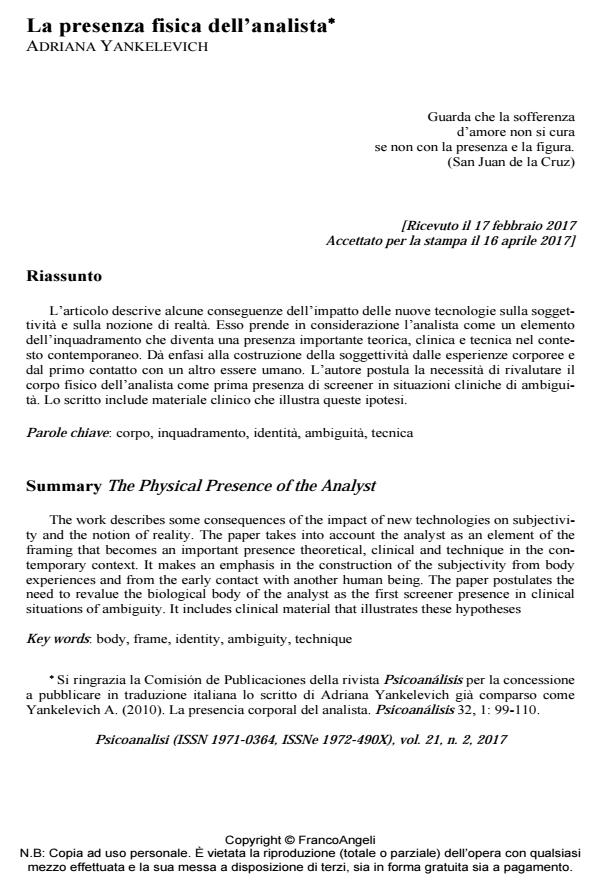The Physical Presence of the Analyst
Journal title PSICOANALISI
Author/s Adriana Yankelevich
Publishing Year 2018 Issue 2017/2
Language Italian Pages 11 P. 69-79 File size 164 KB
DOI 10.3280/PSI2017-002007
DOI is like a bar code for intellectual property: to have more infomation
click here
Below, you can see the article first page
If you want to buy this article in PDF format, you can do it, following the instructions to buy download credits

FrancoAngeli is member of Publishers International Linking Association, Inc (PILA), a not-for-profit association which run the CrossRef service enabling links to and from online scholarly content.
The work describes some consequences of the impact of new technologies on subjectivity and the notion of reality. The paper takes into account the analyst as an element of the framing that becomes an important presence theoretical, clinical and technique in the contemporary context. It makes an emphasis in the construction of the subjectivity from body experiences and from the early contact with another human being. The paper postulates the need to revalue the biological body of the analyst as the first screener presence in clinical situations of ambiguity. It includes clinical material that illustrates these hypotheses
Keywords: Body, frame, identity, ambiguity, technique
Adriana Yankelevich, La presenza fisica dell’analista in "PSICOANALISI" 2/2017, pp 69-79, DOI: 10.3280/PSI2017-002007